This is the third in a series of 12 monthly articles following eight Croatian wineries through their year. We introduced this month’s group of wine makers in the January article.
The timing of bud break is tricky, and there is nothing any wine maker can do about it. Bud break happens after the vines “wake up” in springtime. As the temperature rises, the sap starts to flow inside the vine. Growers can tell when this happens because droplets of sap seep out of the vine through the cuts made during the winter pruning. They say the vines are crying. A short time later, the first green growth of the season breaks through the protective outer shell of each bud. This is bud break. Tiny leaves emerge, then shoots. Later in the season, bunches of grapes will form on some shoots.
In recent years, bud break has started earlier and earlier in most Croatian regions. When bud break is early, a late frost is the greatest danger. Any young leaves and shoots that freeze will not grow to produce grapes. Losing potential fruit now means a smaller harvest and less wine, and possibly lost income.
Krajančić
We wind our way through the rows of Pošip at one end of Čara valley on the island of Korčula, searching for crying vines. Ivana Krajančić says her 86-year-old grandmother, who inspects their vineyards regularly, has reported droplets on some of the cuts. But we don’t know which vineyard she was in.
Instead we stop to look at a vine with the end of one of its canes bent over and buried in the red, iron-rich soil next to it. This is how some wineries replace old or tired vines instead of planting a new stock from a nursery. Grapevines are one of many plants that easily clone themselves. The end of a cane buried in the ground will take root and produce an exact genetic copy of the original plant. Then the older trunk can be uprooted; the new copy takes its place.
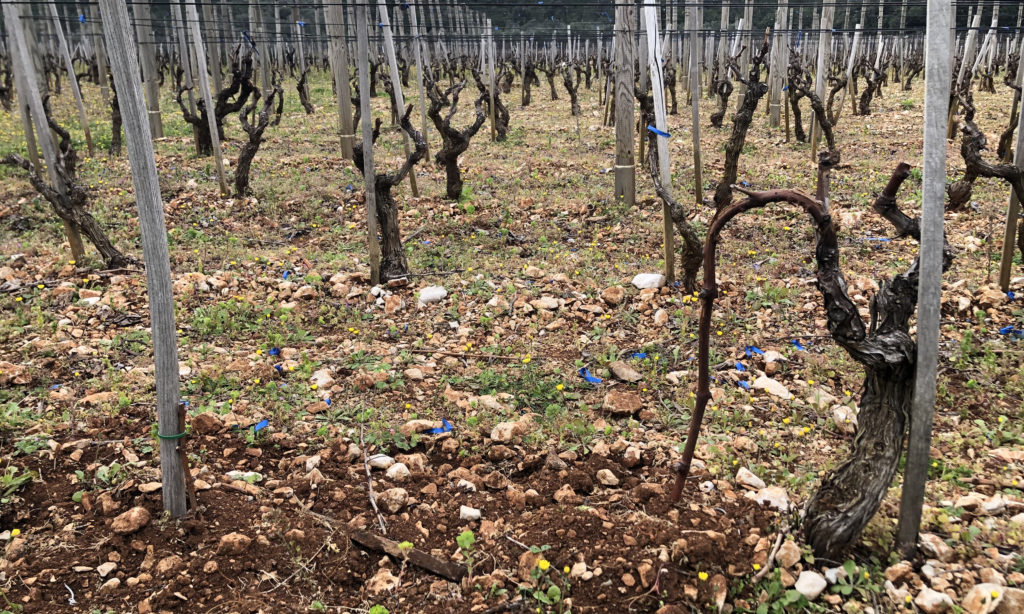
In March the vineyard team will fertilize selected plots with a mixture of organic cow, horse and chicken manure. Otherwise, the only task in the next two weeks is to cut grass between the vines. This can be done by hand while the grass is still tender.
Ivana’s father, Luka, says bud break generally happens around Easter, depending on the temperature. Shortly afterward, the heavy work begins. The first thing will be to cut the vine shoots that erupt from the base of the plant, near the ground, which don’t bear fruit. “You have to cut those [shoots] because they are using water, they are using all the nutrients that are important for actual [shoots] that will bring grapes,” says Ivana.
From here on through the season, growers will pay close attention to how best to maximize the quality of fruit on the vines. One way to do this is to reduce the amount of fruit each vine has to nourish. In the Krajančić vineyards, when the new shoots are about 20 centimeters long, one will be removed and the other will be tied to the support wires to guide its growth. Ivana explains, “It’s the first reduction of the possible grapes. We choose one and the other one is cut. Pošip is a variety that brings a lot of grapes. You can have up to 10 kilos of grapes on one vine. So it’s very important to cut from the beginning … to reduce the grapes.”
Pošip wants to produce 10 kilos, but Krajančić wants at most 1 kilogram per vine. Controlling the yield like this concentrates the aromas and natural sugars in the grapes. Throughout the season, high-quality growers maintain a balance between sun and shade, the number of leaves and the number of fruit clusters, in order to have the best quality grapes at harvest.
Clai
The team at Clai are in a hurry. The vineyard posts that support the grapevines are made of wood and periodically need to be replaced. In a normal year this would mean about 3 percent of the posts, but as wine maker Dimitri Brečević explains, “This year, because we were very good with the pruning, we decided to fix a lot of posts. You have to take off the wires, take out the post, put in a new post and put back the wires.” But now the weather is so warm he estimates they have only about two weeks to finish before bud break. “The spring is a little bit too early,” he says.
Here in Istria the vines are already crying. “For Refošk and Pinot Grigio, which are early varieties, I think we have 15 days [before bud break], maybe three weeks but not more. But we still have a lot of what we call the winter work.”
At the moment, though, Brečević is at the winery, babysitting the clear grappa that is trickling out of the still. Making grappa is a good way to use the grape pomace left over from fermentation.
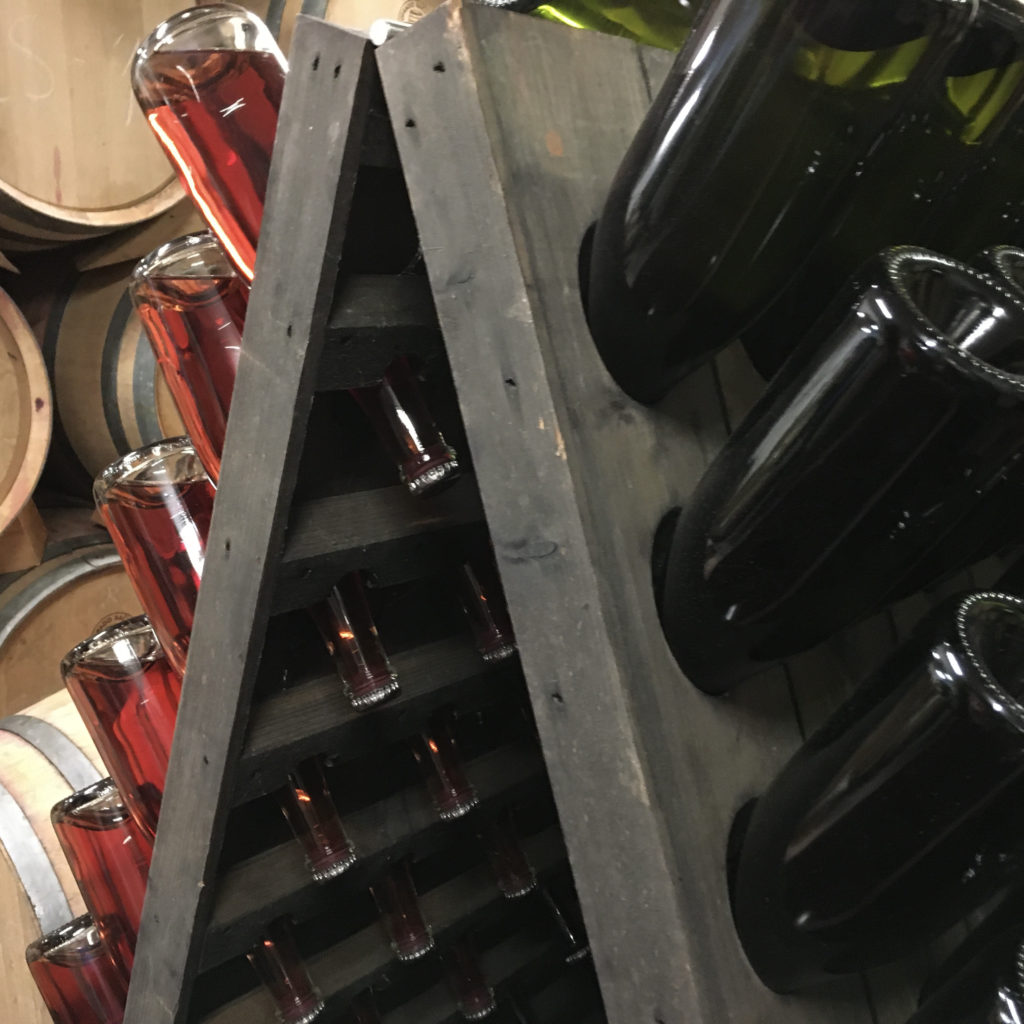
About 10 days from now, the winery team will disgorge the 2017 sparkling wine. Disgorgement is the final stage of making sparkling wine by the traditional method used in Champagne. Right now the wine is in bottles stopped with a crown cap (a metal soda cap) with the dead yeast, or lees, from the second fermentation still in the bottle. Remuage, or riddling, is the process of slowly moving the lees toward the cap by upending the bottles in A-shaped frames. “We are doing the remuage every day,” says Brečević. “You put the bottle upside down and you turn, you turn, you turn … so the lees go around the bottle, step by step going downdowndown. You have to do 1/8 of a turn every three or four hours.”
When the bottles are ready, a mobile disgorgement machine will arrive on a truck. In assembly-line fashion, the machine freezes and expels the plug of lees from the neck of the bottle, adds the same wine to top up, inserts the final cork, wraps the protective cage around it, and adds the outer foil.
“We can do it in one big day,” says Brečević of their almost 4,000 bottles. Then the bottles would ideally sit for two or three months, but last year the sparkling wine sold out early. “Everybody is waiting for the new wine!”
Antunović
No vines are crying on the eastern end of the country, in Erdut. Branimir Antunović expects to wait until mid-April before he sees any such activity. “The days are still short,” he says. “The temperatures during the night are still very low, so you can’t expect much to happen in the vine.” Here, March in the vineyard looks very much like February.
The first varieties to show growth will be Pinot Noir, Chardonnay and Green Silvaner. For Graševina, bud break is a little later. “That is why it has been cultivated in our region for so long. It has a late vegetation and a longer ripening,” Antunović says, which keeps this variety safe from late frosts.
The danger of frost stretches into spring in the Danube region. A freak cold snap can ruin the harvest, not only of grapes but also tree fruits and other crops. “People who aren’t working in agriculture, they just think okay, how come it’s snowing in April? To all of us who are doing anything in agriculture, it is a complete disaster. I think it won’t happen this year, because climate change is evident—we are getting warmer and warmer,” Antunović says.
Meanwhile, the winery team is preparing to bottle the 2020 rosé and Graševina. For the most recent reds, Antunović is still waiting to hear from the EU about funding for the winery’s new barrique barrels. The red wines are made and are sitting in stainless steel tanks, but they need to age in wood. If the EU funding comes through, this will happen in new barriques. But there is a backup plan: “If we don’t get it, then the wines that are in the barriques right now will go in the bottles,” Antunović explains. In this way, a slightly earlier bottling will empty the older barriques for the new reds.
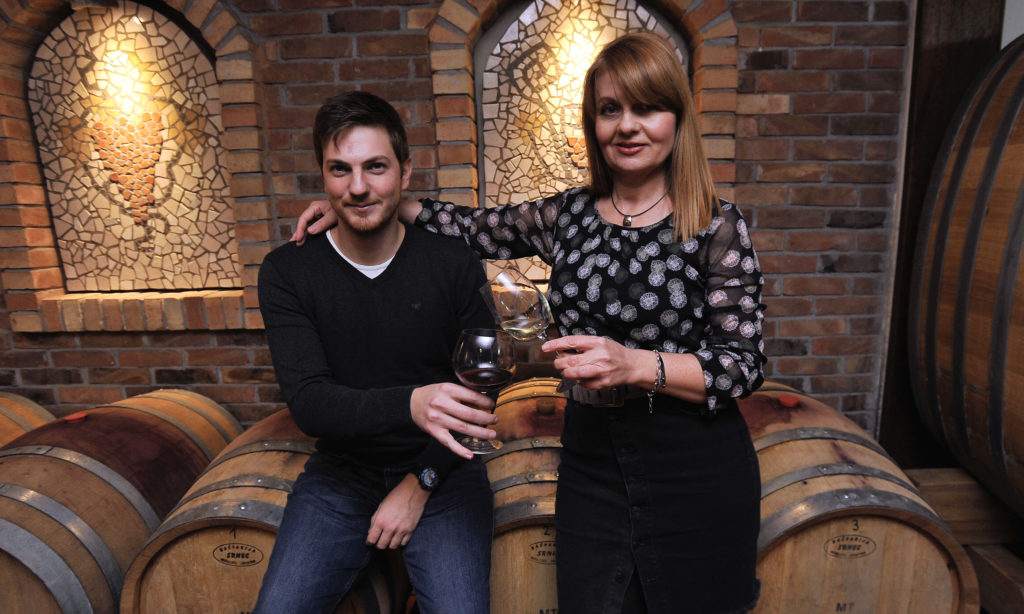
Korak
After two weeks of unseasonable warmth, Josip Korak hopes the current cold spell will delay bud break at least until Easter. The vines are still dormant. “They start crying when the temperature in the soil is higher and the temperature outside is rising,” says Korak.
Here too the family is still working in the vineyards. At the end of pruning, one long cane is left at the top of the vine trunk. This is the “branch” that will produce grapes in the coming season. It needs to be attached to the wires so the shoots, when they come, will grow in the right direction. “Everything needs to go up when it’s growing,” says Korak. This way, the shoots and leaves grow up and the fruit hangs down and is protected from the sun.
“When [the shoots] are growing, after two or three leaves, you start spraying. Last year we started with organic in the vineyards and we spray only with sulfur and copper,” says Korak. “You spray the vineyards … to protect them and destroy some diseases [that may have survived] from last year.” The copper sulfate and elemental sulfur Korak is referring to are treatments allowed in organic growing.
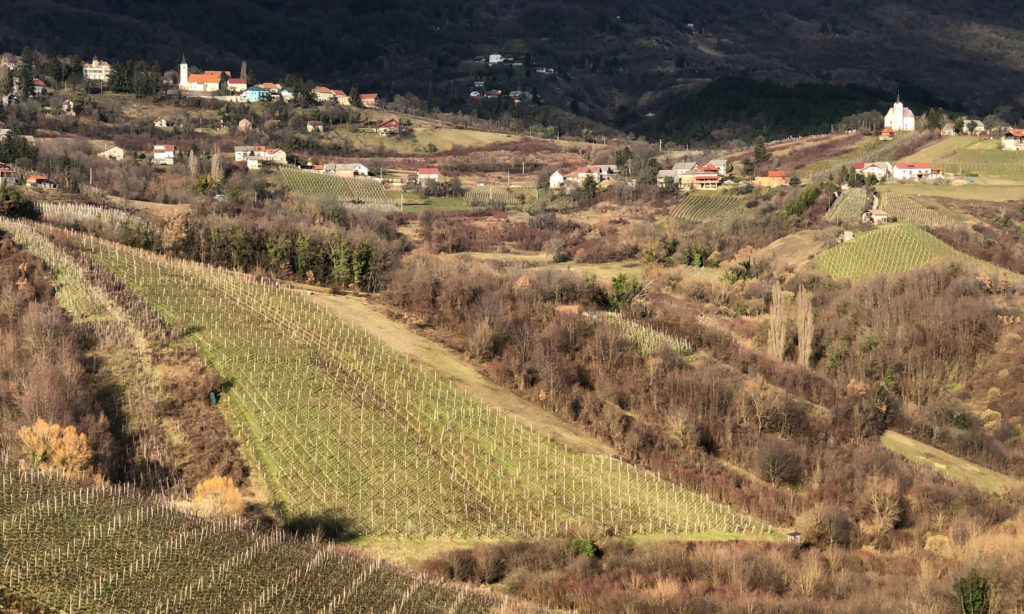
Because the family is busy in the vineyards, they have waited to bottle the base for their sparkling wine. “We don’t need to hurry. It’s no problem, they’ll stay longer now in the barrels.” In a couple of weeks, the wine will be put in bottles with a shot of yeast and sugar to start the second fermentation. The wine will age for more than two years before it is ready for disgorgement.
For the still wines, the 2019 Pinot Noir and Chardonnay are ready to be bottled. “Usually we do bottling before Easter,” says Korak, but this year they’ll extend it into the beginning of April. At the same time, he says, “we prepare some young wine for bottling, like Sauvignon. People always want to drink young Sauvignon with asparagus [in April]. It’s a good combination.” And local visitors are already coming—even if it’s still a bit chilly, the restaurant terrace is open in anticipation of spring.
[Title photo: Grapevines “cry” when the sap rises in springtime. Staff/CCM]

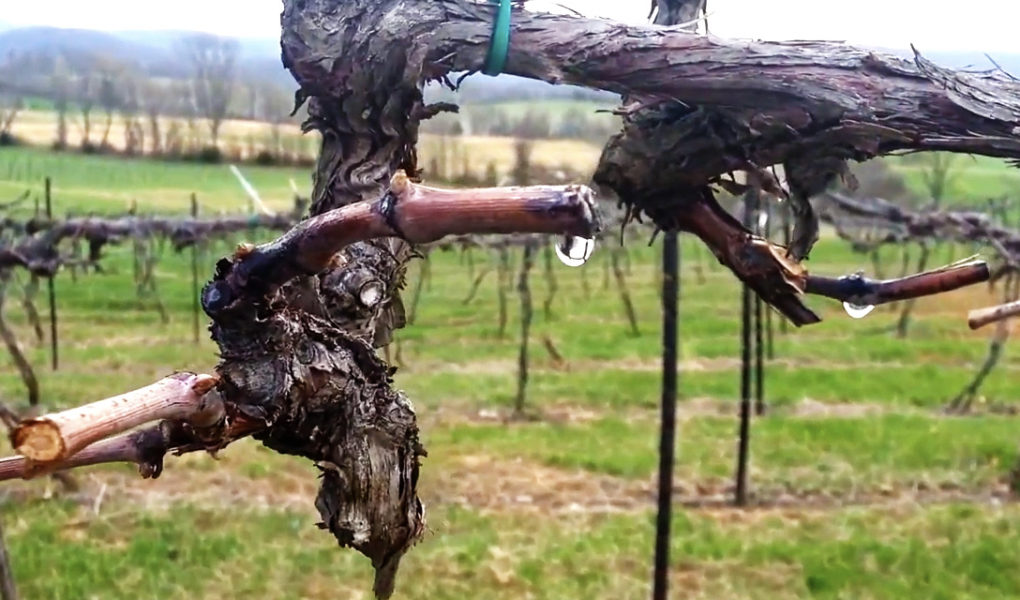
Excellent article! I was in the wine industry for years and this is the first I’ve heard about crying vines. I was also fascinated by the cloning process here, using an existing vine. Nicely done.
Thanks, Barbara! One of the things I love about wine: there’s always something I don’t know yet!